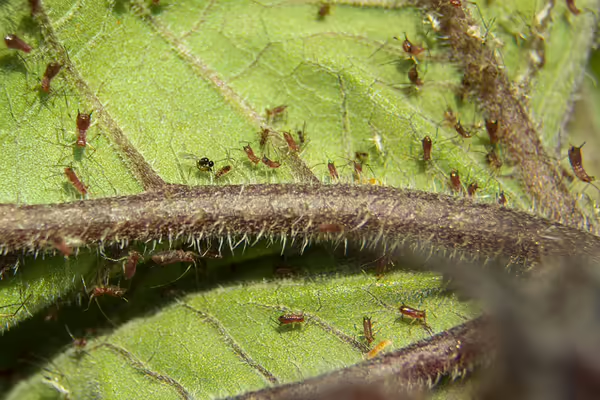
URBANA, Ill. — Warm weather has arrived, and plants are starting to green up and bloom. That also means weeds, insects, and diseases are starting to become active too. As the saying goes, the only things guaranteed in life are death and taxes, and for gardeners, pests are also included in the list of life’s guarantees.
When faced with some of these pest problems, consider using integrated pest management. IPM is an approach to reducing insect pests, weeds, and disease populations to an acceptable level using a variety of different techniques, while not typically trying to completely wipe out the pests. There are four techniques used with IPM: cultural, physical/mechanical, biological, and chemical.
Exploring IPM Techniques
The idea behind cultural management is growing and maintaining a healthy plant. A healthy plant is less susceptible to disease, and they are better able to withstand attacks from insects and competition from weeds. This means growing the right plant in the right place at the right time.
Make sure to choose plants that are appropriate for the site they will grow in, with proper sun exposure, soil moisture, fertility, acidity, etc. Placing a plant in the wrong environment can prevent the plant from reaching its full potential and will likely lead to a weak plant that has more than its fair share of insect and disease problems. If known disease problems are in an area, looking for resistant cultivars to these diseases can help reduce problems. This can also work for some insects. Some other cultural management techniques are crop rotation, pruning, sanitation, and mulching.
The goal for physical/mechanical management is to physically eliminate pests. This can be done in a variety of different ways such as hand-picking Japanese beetles, bagworms, or other caterpillars; pruning out diseased branches, webworms or galls; pulling or hoeing weeds in flower beds or vegetable gardens; or putting up barriers to prevent pests from getting to plants such as bird netting or fencing for rabbits and deer.
In biological management, pests are managed with other living organisms, often called natural enemies. Lady beetles, also known as ladybugs, eat small, soft-bodied insects like aphids, scale, and mealybugs. There are tiny parasitic wasps, too small to sting people, that lay eggs inside aphids, and when the eggs hatch, the larvae eat the aphid. There are other parasitic wasps that lay eggs on caterpillars. These examples often show up when growing tomatoes, where infected hornworm caterpillars will have a mass of what looks like eggs on them, but they are actually cocoons. If found, don’t get rid of that caterpillar, eventually, the wasps will emerge from the cocoon and will go on to attack more caterpillars.
In addition to prey, many natural enemies need sources of pollen and nectar, particularly the adults. By planting plants that are attractive to them, such as dill, cilantro, fennel, cosmos, and blanketflower, it encourages them to stick around.
The final management technique used is chemical. The goal is to manage pest populations by using pesticides, such as insecticides, fungicides, herbicides, etc. If using IPM, chemicals should only be used as needed. In some cases, using pesticides may be the best option to manage a particular pest. However, oftentimes one of the three other techniques of cultural, physical/mechanical, and/or biological can be used to manage pests. If individuals do go the pesticide route, try and use pesticides that are the least toxic possible. Before using any pesticide product, make sure to read the label. The label will tell where the product can be legally used, what it will control, how much and often it should be used, and any precautions to take while using the product.
Want to learn more about IPM? Check out the Good Growing Podcast episode exploring techniques, tools, and tips for a healthier garden. For questions, contact a local University of Illinois Extension office from the statewide map.
Ken Johnson is an Illinois Extension horticulture educator for Calhoun, Cass, Greene, Morgan, and Scott counties. Gardeners Corner is a quarterly newsletter from gardening experts around the state. Each issue highlights best practices that will make your houseplants, landscape, or garden shine in any season.
Caption: A parasitoid wasp laying an egg inside an aphid. Photo by: Ken Johnson, University of Illinois Extension. Photo available for media download, including credits.
University of Illinois Extension develops educational programs, extends knowledge, and builds partnerships to support people, communities, and their environments as part of the state's land-grant institution. Extension serves as the leading public outreach effort for University of Illinois Urbana-Champaign and the College of Agricultural, Consumer and Environmental Sciences in all 102 Illinois counties through a network of 27 multi-county units and over 700 staff statewide. Extension’s mission is responsive to eight strategic priorities — community, economy, environment, food and agriculture, health, partnerships, technology and discovery, and workforce excellence — that are served through six program areas — 4-H youth development, agriculture and agribusiness, community and economic development, family and consumer science, integrated health disparities, and natural resources, environment, and energy.